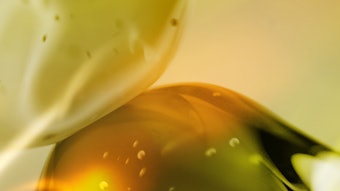Perhaps it is not too surprising that this affirmation came from Ernest Beaux, the perfumer who created Chanel 5. Up to the beginning of this century, perfumes were composed almost entirely of natural oils and extracts. In 1889, Jicky set a new trend by using some synthetic ingredients; coumarin, heliotropin and vanillin. However, these were nature identical, their natural counterparts can be found in, for example, tonka beans, heliotrope flowers and vanilla beans respectively. Beaux’s use of totally synthetic aldehydes in Chanel 5 in 1921, was a much more significant watershed for the industry and was, in that sense, the beginning of modern perfumery. Since then, fragrance chemists have been engaged in an unending search for new ingredients. In fact, it is only through the use of synthetic ingredients that perfumers can create fragrances which will function well in consumer products such as soaps, detergents and household cleaners and at a price that everyone can afford.
The commercial importance of novel fragrance ingredients adds weight to our scientific curiosity in wishing to understand the relationship between molecular structure and odour. It is widely assumed that, if we could predict more accurately the odour of a putative structure before it was synthesized, it would greatly increase the efficiency, and hence lower the cost, of the search for novel ingredients.
Structure/activity relationships: All physical, chemical and biological properties of a substance are determined by its molecular structure. Therefore, in principle, if one knows exactly how a molecule interacts with a biological system, one could predict the effect it will have on that system. However, our current understanding of the interaction of molecules with biological systems is very far from complete. Indeed, our understanding of the nature of molecules is really only a simple picture and our ability to build effective models of them is limited. As far as biological properties are concerned, even if we were to understand exactly the nature of the receptor/substrate interaction, that would only be part of the picture since transport of the active molecule to the receptor is important. In fact, in some cases (eg anaesthesia), transport is the most important factor.










